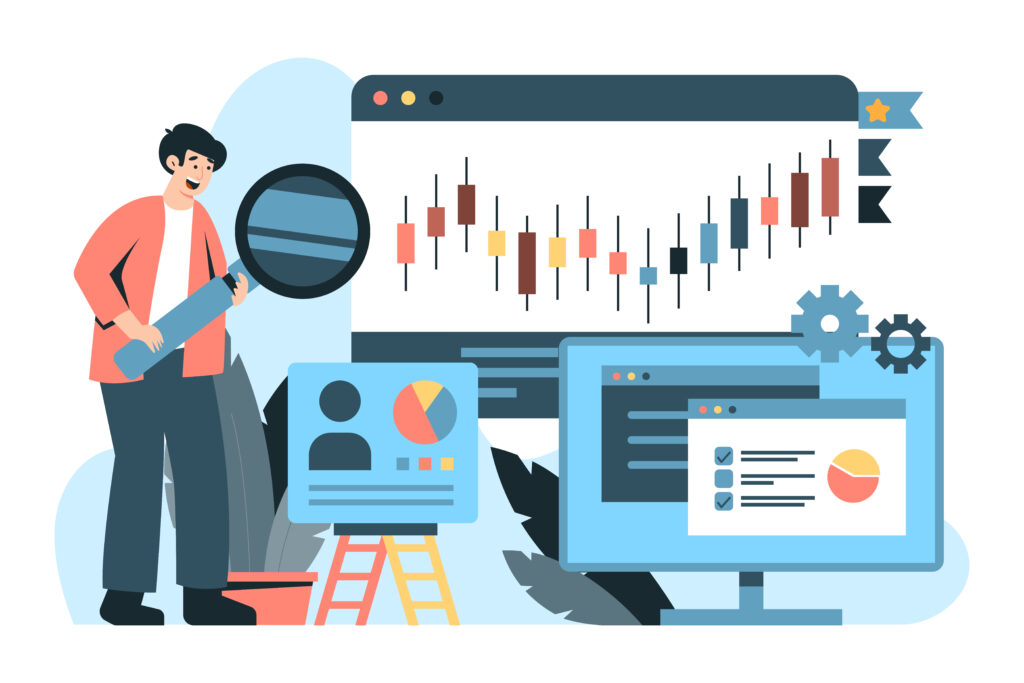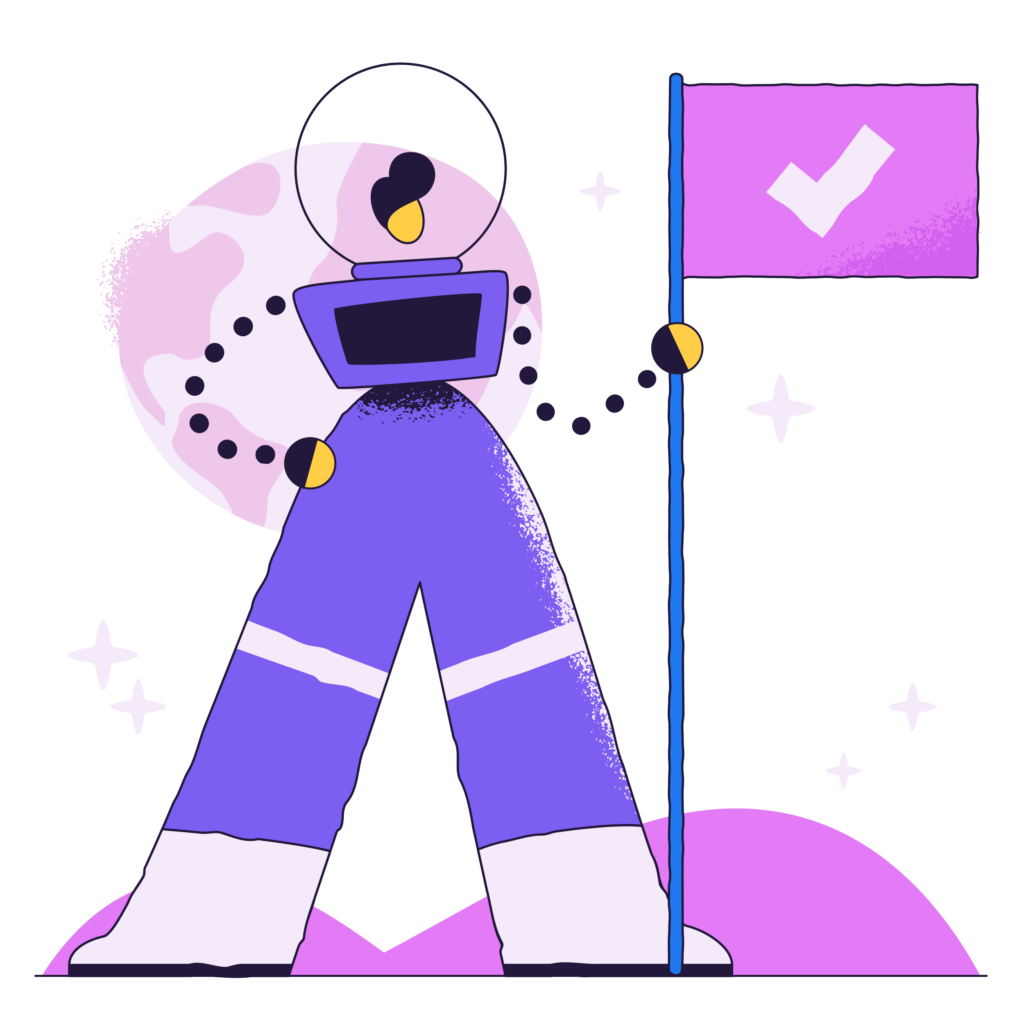With millions of websites and applications vying for attention, developers need to go beyond their intuition and rely on concrete insights to stand out in the competitive landscape. That’s where data analytics steps in, offering developers and decision-makers a treasure trove of insights. By harnessing the power of data, you can uncover hidden patterns, understand user behavior, and make data-driven decisions that drive innovation, user engagement, and business growth. In this article, we will delve into the world of data analytics and explore how it can revolutionize decision-making in web and app development.
What Is Data Analytics?
Data analytics refers to the process of examining raw data to extract meaningful insights and patterns. It involves the use of various techniques and tools to collect, analyze, and interpret data to uncover valuable information. In the context of web and app development, data analytics allows developers to gain a deep understanding of user behavior, preferences, and needs. By analyzing data from multiple sources such as user interactions, traffic patterns, and demographic information, developers can make data-driven decisions that lead to improved user experiences.
How Data Analytics Help Drive Informed Decision in Web and App Development
Data analytics provides developers with concrete evidence and actionable insights to guide their decision-making process. By analyzing data, developers can:
1. Identify Trends and Patterns in User Behavior

Through data analytics, developers can gain a deep understanding of how users engage with their digital products. They can track user journeys, examining the path users take as they navigate through websites or apps. This analysis reveals valuable insights into user preferences, pain points, and areas of high engagement. By identifying these trends and patterns, you can optimize the user experience, ensuring that websites and apps are designed to meet the specific needs and expectations of your target audience. For example, data analytics can help identify the most frequently accessed pages or screens within a website or app. By analyzing user traffic patterns, you can determine which sections of your digital product are most popular and engaging. This information allows you to allocate resources effectively, focusing on enhancing those sections to further captivate users and drive higher engagement.
Additionally, data analytics allows you to track user behaviors and preferences in real-time, enabling you to adapt your strategies quickly. By monitoring user interactions, you can identify trends, detect changes in user preferences, and adjust your web and app development efforts accordingly.
2. Measure Performance Metrics
Developers benefit from data analytics by gaining access to key performance indicators (KPIs) that provide valuable insights into the effectiveness and efficiency of their digital products. The analysis of performance metrics gives you a comprehensive understanding of your websites or applications, identifying areas for improvement. Through monitoring metrics like page load times, bounce rates, conversion rates, user engagement, and error rates, you can optimize your products for improved speed, user experience, and overall success. Performance metrics serve as quantitative indicators, guiding informed decisions and enabling continuous refinement and enhancement of websites and apps.
3. Identify User Segments and Improve Personalization

By leveraging data-driven insights, developers can understand the diverse characteristics, behaviors, and preferences of their user base, allowing them to tailor their web and app development strategies to meet the specific needs of each segment.
Data analytics allows you to segment your user base based on various criteria, such as demographics, behavior patterns, purchasing habits, or engagement levels. By analyzing these segments, you gain a deeper understanding of the unique characteristics and preferences of different user groups. This knowledge enables you to personalize the user experience, create targeted marketing campaigns, and deliver relevant content. By catering to the specific needs and interests of each user segment, you can enhance user engagement, increase conversions, and foster stronger brand loyalty.
4. Conduct A/B Testing
A/B testing, also known as split testing, is a powerful technique that enables you to employ data analytics in web and app development. This method involves comparing two or more versions of a webpage or app screen to determine which variation performs better in terms of user engagement, conversion rates, or other key metrics. Testing can encompass various elements, including design components, content and messaging, navigation, functionalities, and pricing strategies. By tracking and analyzing user interactions and conversions, you can evaluate the performance of each variation and make informed decisions based on data-driven insights.
5. Forecast and Predict User Behavior

Leveraging historical data and utilizing predictive modeling and machine learning algorithms enables you to forecast and predict user behavior. By analyzing patterns, trends, and correlations in the data, you can identify indicators that help forecast user behavior. These indicators can include factors such as time of day, day of the week, user demographics, previous interactions, or even external variables like seasonality or market trends. By incorporating these insights into your web and app development strategies, you can proactively design and develop features, functionalities, and content that align with predicted user behavior. For instance, data analytics can help you anticipate user preferences and personalize recommendations or content based on individual user profiles. By analyzing user browsing history, purchase behavior, or interactions with specific content, you can make data-driven predictions about users’ future interests, enabling them to deliver tailored experiences and improve user engagement.
6. Optimize User Acquisition and Retention
Data analytics can help developers optimize user acquisition and retention strategies. Analyzing data on user acquisition channels, conversion rates, and churn rates can help you identify the most effective marketing channels and tactics for acquiring new users. Additionally, data analysis can uncover insights on user retention, allowing you to implement strategies that improve user engagement and enhance overall user satisfaction.
7. Validate Design and Development Decisions
Data analytics provides developers with objective metrics to validate design and development decisions. By analyzing user feedback, A/B testing results, and performance metrics, you can evaluate the impact of design choices, feature implementations, and functionality updates. This validation ensures that design and development decisions are based on concrete evidence rather than assumptions, leading to more effective and user-centric outcomes.
How to Utilize Data Analytics to Make Informed Decisions in Web and App Development
This section explores practical strategies and techniques for effectively utilizing data to make informed decisions. From data collection and analysis to the application of data-driven insights, developers can leverage the potential of data analytics to optimize user experiences, enhance performance, and achieve their development goals.
1. Define Clear Objectives

Before diving into data analysis, you should define clear objectives and key performance indicators. This process involves identifying specific goals and outcomes that align with the project’s purpose and desired results. By having specific goals in mind, you can focus your data collection efforts on relevant metrics and ensure the insights obtained align with your desired outcomes.
2. Gather Relevant Data
To make informed decisions, you need access to accurate and relevant data. This may include data from user interactions, website or app analytics, customer feedback, and market research. Implementing data tracking tools and integrating analytics platforms into web and app development frameworks are essential steps to gather the necessary data. Gathering relevant data provides the foundation for data analysis and insights that drive effective development strategies and optimizations.
3. Analyze and Interpret Data

Once data is collected, you can utilize various data analysis techniques and tools to derive meaningful insights. During the analysis process, developers use data visualization tools, statistical models, and algorithms to organize and present the data in a comprehensible manner. This enables them to identify key findings, understand the relationships between variables, and draw actionable conclusions. Through careful interpretation of the analyzed data, you can gain a deep understanding of user preferences, pain points, and engagement patterns.
Interpreting data involves looking beyond surface-level observations and delving into the underlying implications. It requires critical thinking and a keen eye for detail to uncover hidden insights that can drive decision making. Developers can uncover actionable insights such as optimizing user journeys, identifying areas for improvement, validating design choices, or targeting specific user segments for marketing campaigns. By effectively analyzing and interpreting data, you can make informed decisions that guide the development process. You can identify opportunities for optimization, prioritize feature enhancements, allocate resources effectively, and deliver a user experience that meets and exceeds user expectations.
4. Iterate and Refine
Data analytics is an iterative process. That’s why you should continuously monitor and analyze data, adjusting your strategies and approaches based on the insights gained. Regularly evaluating the impact of design and development decisions and implementing improvements based on data-driven findings ensures a user-centric approach.
Make Informed Development Decisions With Data Analytics
Data analytics is a game-changer in web and app development, offering developers the ability to make informed decisions based on concrete insights rather than intuition alone. By leveraging the power of data, you can enhance user experiences, improve conversion rates, allocate resources efficiently, and gain a competitive edge. From identifying trends and patterns in user behavior to measuring performance metrics and optimizing user engagement, data analytics provides you with the tools you need to stay ahead of the curve and create impactful digital products.
If you have any questions concerning data analytics and its application in web and app development, feel free to reach out to us. Bright Development is dedicated to providing expert guidance and tailored solutions to meet your specific needs. Schedule a consultation with us today to discuss your project and address all your inquiries.


